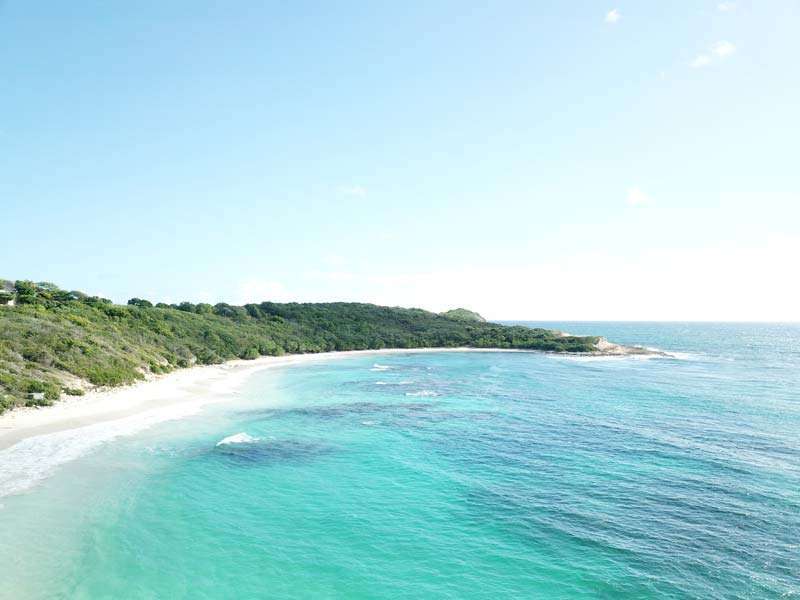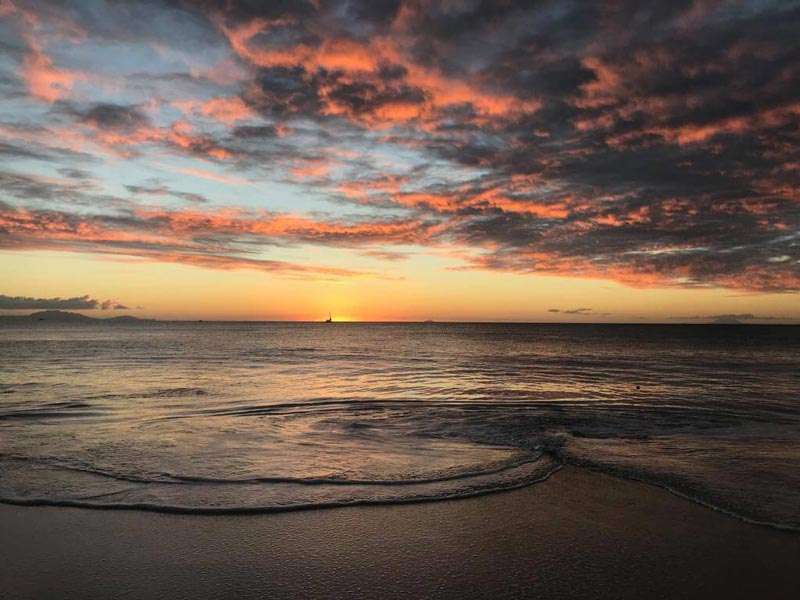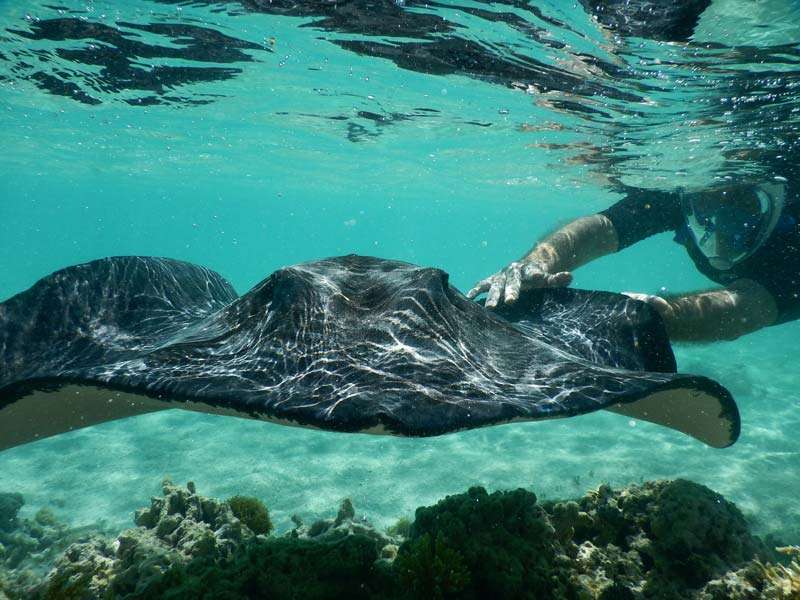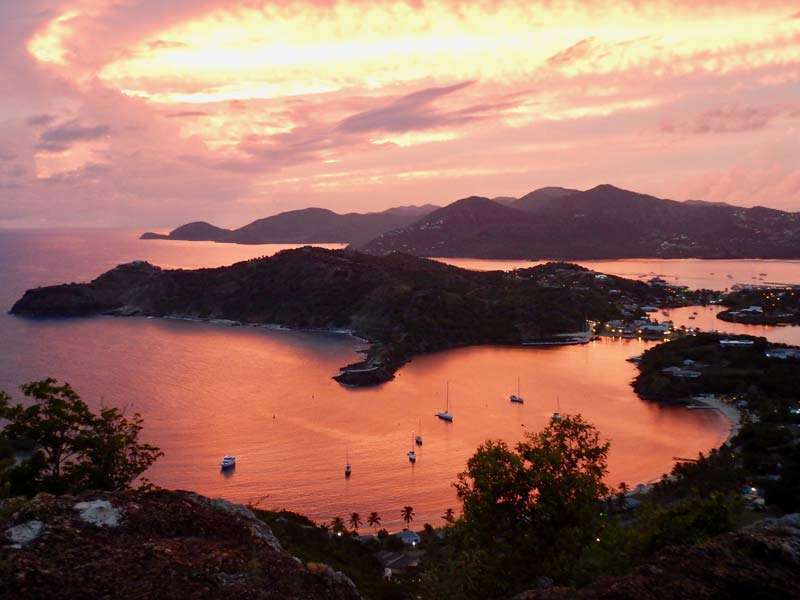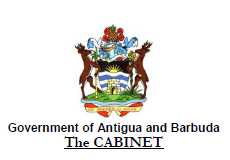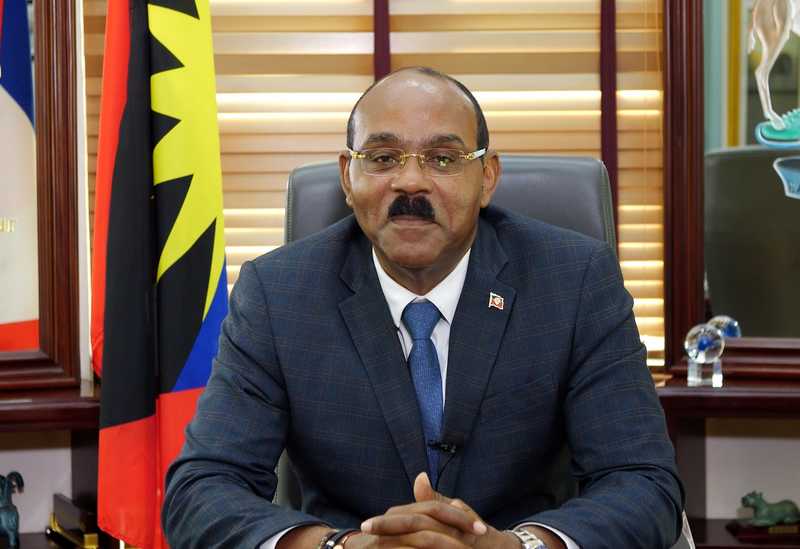Roberto and Melania are two Italian tourist guides in Antigua. They have created “Antigua +39 Tour”: a tourist service to help Italian tourists to discover the archipelago, its wonders and the activities that can be done there.
Ambassador Dario Item asked Roberto and Melania a series of questions to help them get to know the archipelago better and what it has to offer.
Roberto, Melania: Which beaches of Antigua and Barbuda would you recommend?
Let’s start with a magic number: 365. It is the number of beaches on the island, or so it is said, we have never counted them but, also considering also Green Island, Long Island, Bird Island and Barbuda, we believe that the number is likely to be right.
Of course, you’re spoilt for choice. And a choice has to be made.
You could start with Half Moon Bay.
Within a national park, this beach is shaped like a half-moon and it measures is over a kilometer long. There are several areas there. In the middle of the bay you will find beautiful waves to which will be fun to surf have fun surfing. Moving to the left, the waves decrease and a few dozen meters from the shore is the coral reef for snorkeling.
Further to the left there is an area where the sea becomes a natural swimming pool: without waves and without wind, crystal clear waters. From There we can find here a sedimented rock cliff starts, from which a clay is obtained taken and that can also be used also for skin treatments.
Another beach not to be missed is Ffryes Beach, located in a protected area. Here you will find large trunks of tamarind bleached by the sun and salt, stranded on the beach. In the middle of the day, the seawater offers show all kinds of shades of blue.
The Rendez-vous Bay is also worth mentioning for its isolated location and unspoiled nature. The beach can only be reached on foot and by bicycle (or with a good off-road vehicle, but we recommend a walk). It is located in the south-west of the island of Antigua.
In the east there is the Long Bay Beach, famous for its white sand. Here, it is almost impossible to keep your eyes open without sunglasses.
Among the most famous and popular, for its location and the services offered, we recommend the Jolly Beach. It is a very wide beach and it is more than a kilometer long. Here, the sand is very white, too.
We have mentioned only reported five only, but there are many wonderful beaches, hidden, little known or little frequented. Each one, in its own way, leaves you breathless.
As for Barbuda, on the other hand, one could simply say that it is a real paradise. We like to say that if a paradise exists, it certainly has a beach in Barbuda.
The island measures 160 square kilometers (about twice the size of Formentera) and it is very different from Antigua. Even more after the passage of Hurricane Irma, which left more animals than humans on the island.
There are many beaches in Barbuda, too. There is the Low Bay, also called Eleven Miles. Here is the Pink Sand Beach: it is a marvel in pink (the color is due to tiny pink shells), a tongue of sand twenty kilometers long in which it is very rare to find human footprints.
Moving southwest you will find the beach dedicated to Lady Diana, the place that the princess loved to attend go to in the mid-nineties. It is the typical Caribbean beach since we can think of imagination and extends it stretches for more than seven kilometers.
As far as excursions are concerned, what do you usually recommend?
Our knowledge of the territory is very deep and we can organize excursions ranging from nature, beaches, sea and history.
We usually organize a one-day trip. We leave in the morning to cross the island of Antigua from West to East.
We pass through the beaches of Darkwood, Keyonna, Turner, Carlise Bay, passing through the Rain Forest, the rainforest of Antigua, to reach Seatons, where you can swim with giant rays: we usually take a small boat and we move about 4km off the coast, until we reach a coral reef named Barsh. It retains the coral sand forming a natural pool in the middle of the sea where the water does in not higher than not exceed one and a half meters in height.
The giant rays are naturally free, they arrive when they hear the sound of the an engine. They have a wingspan of about two meters. We usually moor at a floating platform and descend into the water to take them in our arms, feed them and play with them a bit: they are quiet and intelligent animals, accustomed to man.
In the same area you can snorkel and discover tropical corals and fish.
It all lasts about an hour and a half. We provide water, t-shirts and sunscreen.
Then, when we return to the mainland, we there is always a way to have a drink and take a shower.
The day continues with Long Beach Bay, one of the most famous beaches.
Then we move on to Devil’s Bridge, a spectacular natural bridge, dug by the waves, which has a tragic legend: it is said that from there the slaves committed mass suicide from there.
The excursion continues to Half Moon Bay. Here we have lunch under a palm tree, facing the sea. We prepare everything: appetizers, first course and some tropical fruit.
After lunch we leave the beach, and as we said, there is also the chance to sprinkle the body off with the clay that taken from is created in the rocky area.
The day ends in Shirley Heights, in the national park, the panoramic point where you can enjoy the sunset and a beautiful view of the historic port of the British Navy, the English Harbour.
For the more sporty ones, instead, we organize an excursion by e-bike to cycle, with along which to pedal on the shoreline and get in touch with the territory and the people who live it there.
We usually leave from Jolly Harbour and provide all the necessary equipment and clothing. We select routes for the less experienced or more demanding, to discover the most authentic Antigua.
Being on a Caribbean island, then, you cannot miss a day on a sailboat. We can sail from Carlise Bay to Deep Bay, stopping occasionally for a swim. The navigation is quiet and never demanding too challenging for those who are not used to the boat.
How can you discover the true essence of Antigua, far from the classic tourist circuits?
Surely you can discover a lot by entering the forest. You can meet Rastafarians characters, in a context that has nothing to do with tourism, and see how you they can live in symbiosis with nature, where there is only the what is essential.
These people can teach you how to take care of yourself with plants, how to eat what the earth has to offer, how to recognize every type of plant: from the most unknown banana tree to the tree of life, and then pineapple plants, cocoa plants and so on…
And what can be done in Antigua at night?
Well, definitely not to be missed is the sunset in Shirley Heights.
Then there is the Steel Band, the sweetest and most classic of Caribbean rhythms: live bands play reggae and calypso music until about 1022:30 pm.
An authentic place that we love to attend go to on Sunday nights is the Road House. It offers live music and the opportunity to dance, without age limits.
In winter the liveliest areas are being the English Harbour and the Falmouth Harbour, where yachts moor. There are plenty of places to spend the evenings here.
Is there any history, legend or simple curiosity about Antigua and Barbuda?
On the island of Antigua there are many “Silk Cotton Trees“.
This tree was sacred to the Maya and has become of great spiritual value to the people of the Caribbean area.
The Silk Cotton tree is also called “Ceiba” and you cannot miss it when you go around the island.
Along the Fig Tree Drive and in the rainforest at Wallings, you can admire its huge trunk and its wide, flat foliage made of branches that stretch horizontally.
Depending on the vintage, from December to February you will be walking in a cloud of whitish cotton. The pink flowers bloom before the leaves even appears. Then fruits with an elongated and elliptical shape are born, which open up to reveal the cotton that holds the seeds. The seeds will rain fall down from the tree, while from the bamboo is obtained the “kapok”, commonly used as a padding for sofas, mattresses and life jackets.
Another curiosity concerns the huge canoes that so impressed Christopher Columbus when he arrived in these areas. Some of them were big enough to carry a hundred men.
These canoes were obtained by digging the trunk of the Ceiba. The choice of the tree was preceded by special ceremonies during which permission was requested from the spirits of the tree to fry.
Today the spiritual properties attributed to the Ceiba are still very much alive and felt by the local population. In some Caribbean countries, it is called “the tree god”, in others “the devil’s tree”.
There are many stories and legends about this tree and many continue to believe that it has a soul, a resident spirit. Even today, many people can still tell stories and experiences about their own garden tree.
Whatever you think about it, you should always be respectful when you come across these giants. When you meet them, give them a whispered compliment, or a few drops of water: who knows that you could satisfy even the spirits who live there.
What are your suggestions for shopping in Antigua?
Surely, it is worth diving yourself into the colors and atmosphere of local craftsmanship, there are stalls and shops of all kinds.
In the capital Saint John’s, the area that separates the two duty free shopping districts (Heritage Quay and Redcliff Quay) is the most characteristic.
Here you can find stalls and craft shops of all kinds. Not to be missed is the craft market at the end of Market Street, after the fruit market: natural soaps, baskets, leather goods, almost all made in Antigua.
If you go into the surroundings you will discover shops of Lebanese and Syrian traders where you can find shoes, fabrics and clothes in general.
For those who prefer duty-free shopping, there are two points of reference.
The first is Heritage Quay. A lively shopping complex full of jewelers, glassmakers, photo opticians, and shops selling beach and sports goods.
The second, the Redcliff Quay. It is located between the lower part of Redcliff Street and Saint John’s Bay.
Here you can stroll through clothing stores, batik, souvenirs of all kinds.
In the area there are also art galleries, ice cream parlors, bars, restaurants.
Not to forget also the stalls in the Fig Tree Drive, where you can buy jams and other local products directly from the manufacturer.
The English Harbour rum, one of the most popular souvenirs in Antigua, cannot be missing from the any tourist’s suitcase. It is a molasses, rum produced in a family-run distillery in the capital Saint John’s, the “Antigua Distillery“.
